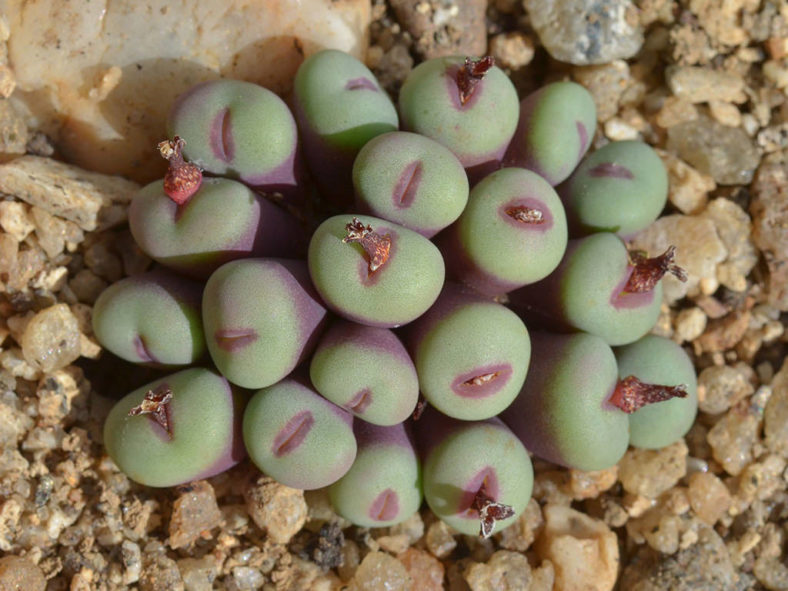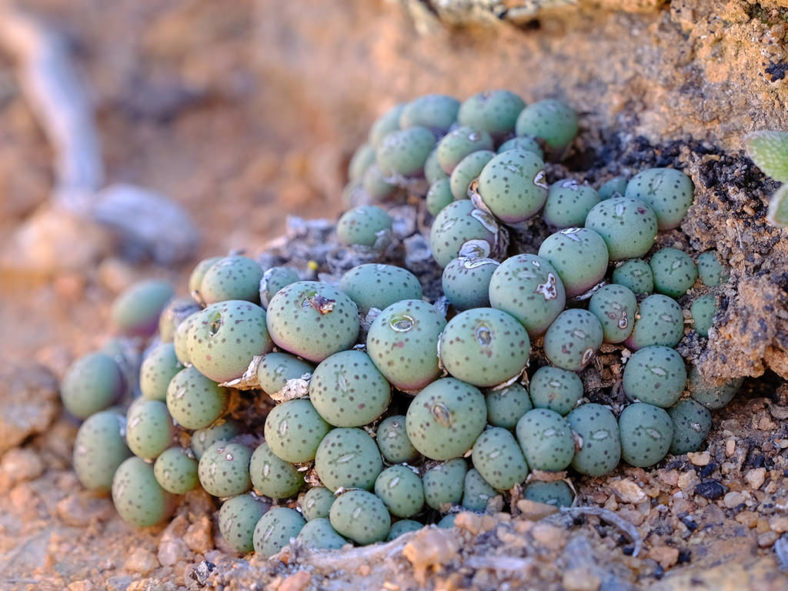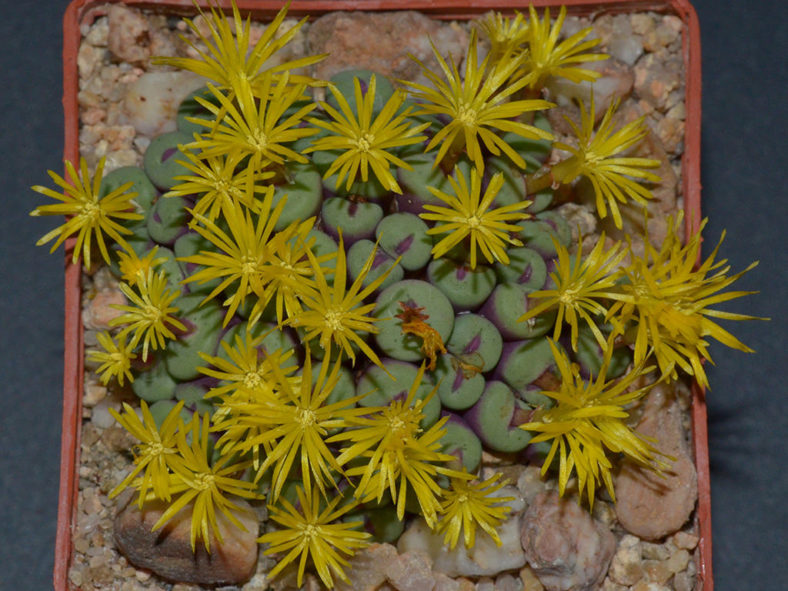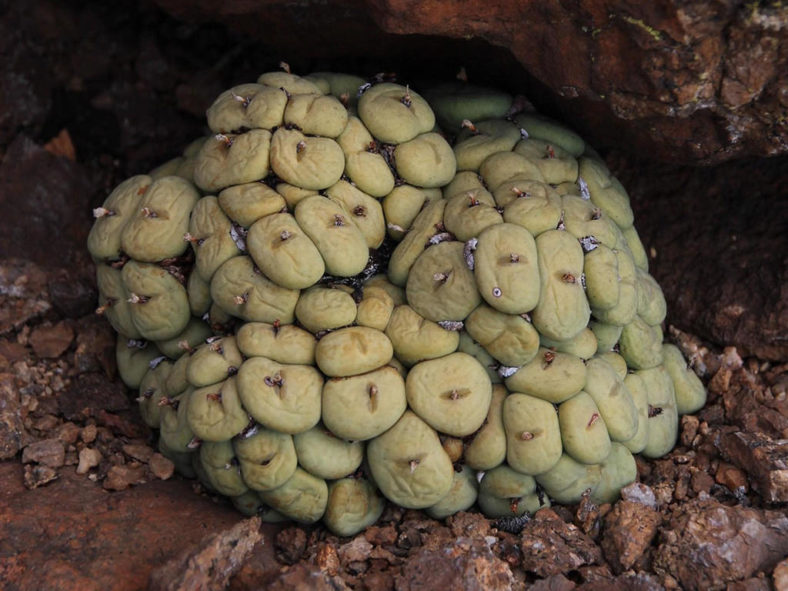Scientific Name
Conophytum pageae (N.E.Br.) N.E.Br.
Synonym(s)
Mesembryanthemum pageae
Scientific Classification
Family: Aizoaceae
Subfamily: Ruschioideae
Tribe: Ruschieae
Genus: Conophytum
Etymology
The specific epithet "pageae (PAY-jee-ay)" honors Mary Maud Page (1867-1925), an English-born botanical illustrator, plant collector, and botanical explorer who emigrated to South Africa in 1911.
Origin
Conophytum pageae is native to South Africa (Northern Cape and Western Cape) and southern Namibia. It grows in quartz gravel flats, ridges, gneiss, gypsum, shale, dolerite, sandstone outcrops, cliffs, and sheltered or exposed rock pockets.
Description
Conophytum pageae is a dwarf succulent that usually grows in clusters of many bodies, forming a small mound. The bodies are inversely conical, consist of two almost entirely fused leaves, and can grow up to 1 inch (2.5 cm) tall and 1.4 inches (3.5 cm) in diameter. They are glaucous-green to pale yellowish-green, rarely spotted, and often wrinkled. The fissure between the leaves is usually surrounded by red and sometimes raised like a doughnut.
The solitary flowers are nocturnal, fragrant, showy yellow, sometimes nearly white or rarely pink, and appear in fall.

How to Grow and Care for Conophytum pageae
Light: This succulent needs bright light but does not like too much direct sun. To avoid sunburn, place your C. pageae in a position to receive a few hours of full sun in cooler periods of the day. The plant stretches if it needs more light.
Soil: C. pageae thrives best in porous soil mixes that allow water to drain away quickly. Use a commercial potting mix specially designed for growing succulents, or make your own.
Hardiness: High temperatures are not a problem for this plant, but it can be damaged when they go below freezing. C. pageae can withstand temperatures as low as 35 to 50 °F (1.7 to 10 °C), USDA hardiness zones 10b to 11b.
Watering: When it goes dormant in the spring, C. pageae requires little or no water. When it begins growing in the fall, it is safe to water deeply, allowing the soil to dry before watering again. During active growth, your plant needs water if the leaves start to wrinkle.
Fertilizing: This small succulent is a light feeder and does not need fertilizer if repotted every two years.
Repotting: The best time to repot C. pageae is at the beginning of the period of active growth, but repotting can be done almost any time while the plant is actively growing.
Propagation: Like all Conophytums, this plant is easily propagated by division. It can also be grown from seeds. The best time to divide C. pageae is in late summer or early fall, before it begins to break dormancy or after it has flowered. Sow the seeds in fall in a pot with a well-drained soil mix.
Learn more at How to Grow and Care for Conophytum.
Toxicity of Conophytum pageae
C. pageae is non-toxic and safe to grow around children and pets.
Links
- Back to genus Conophytum
- Succupedia: Browse succulents by Scientific Name, Common Name, Genus, Family, USDA Hardiness Zone, Origin, or cacti by Genus
Photo Gallery
Click on a photo to see a larger version.


